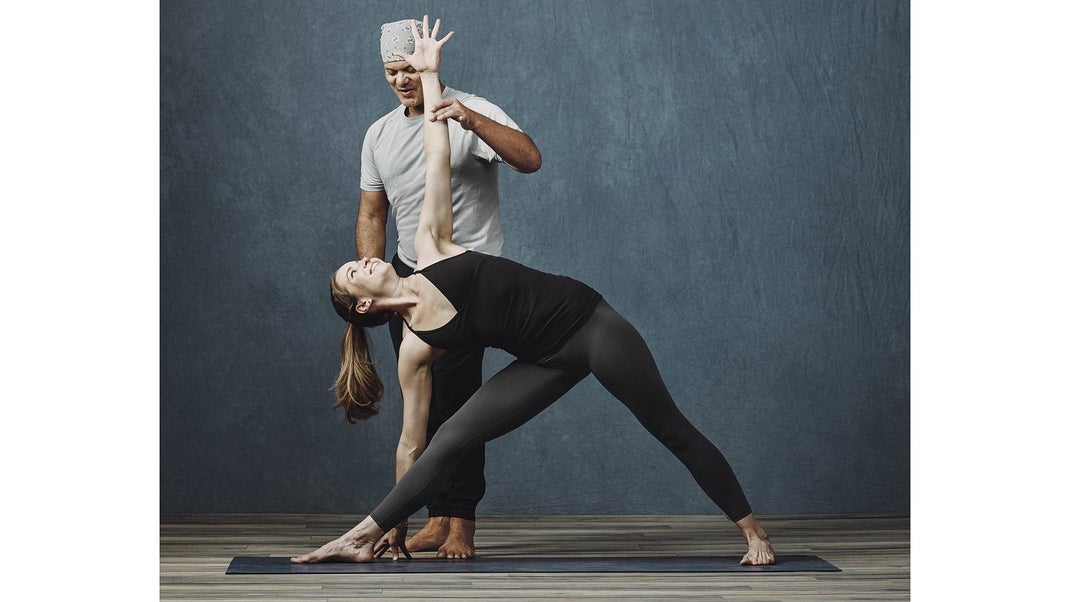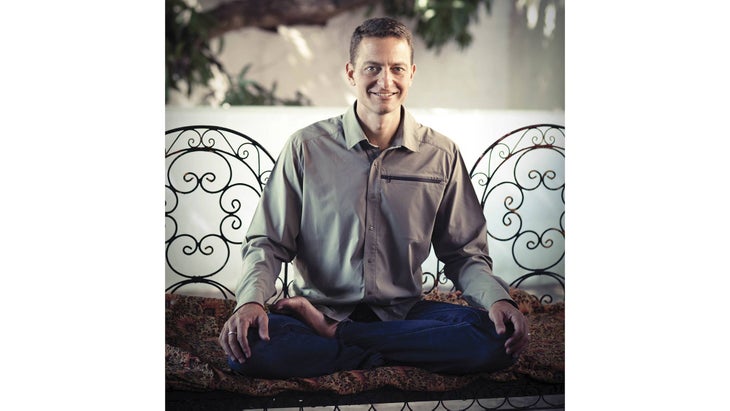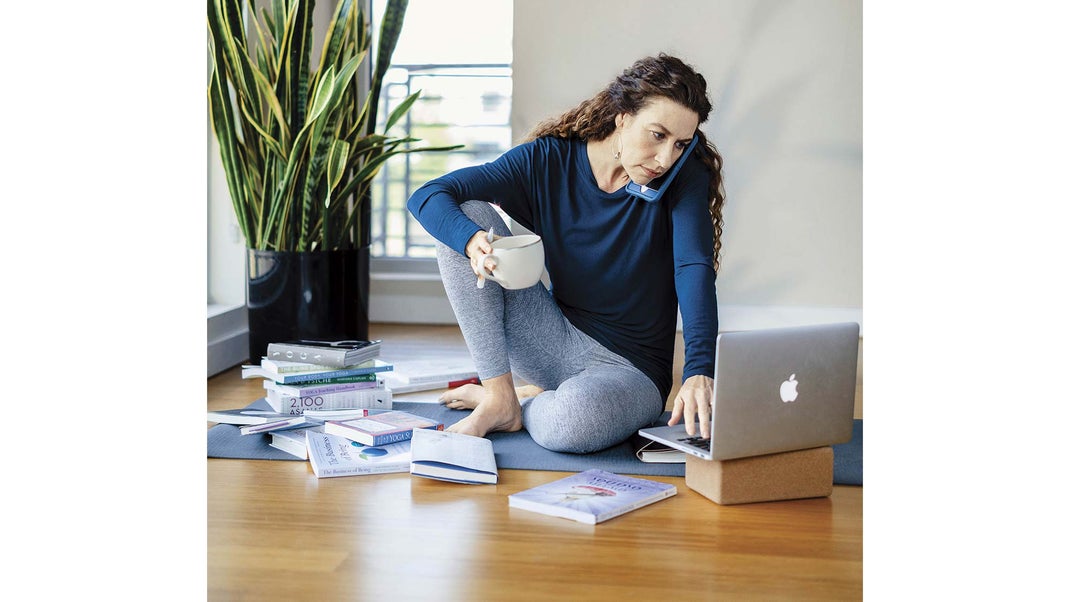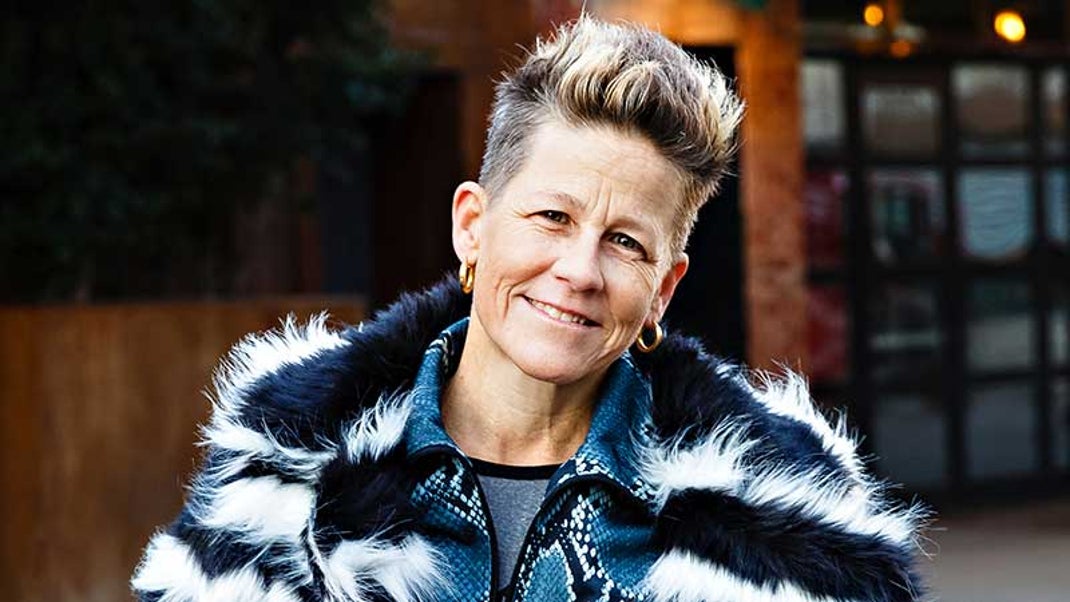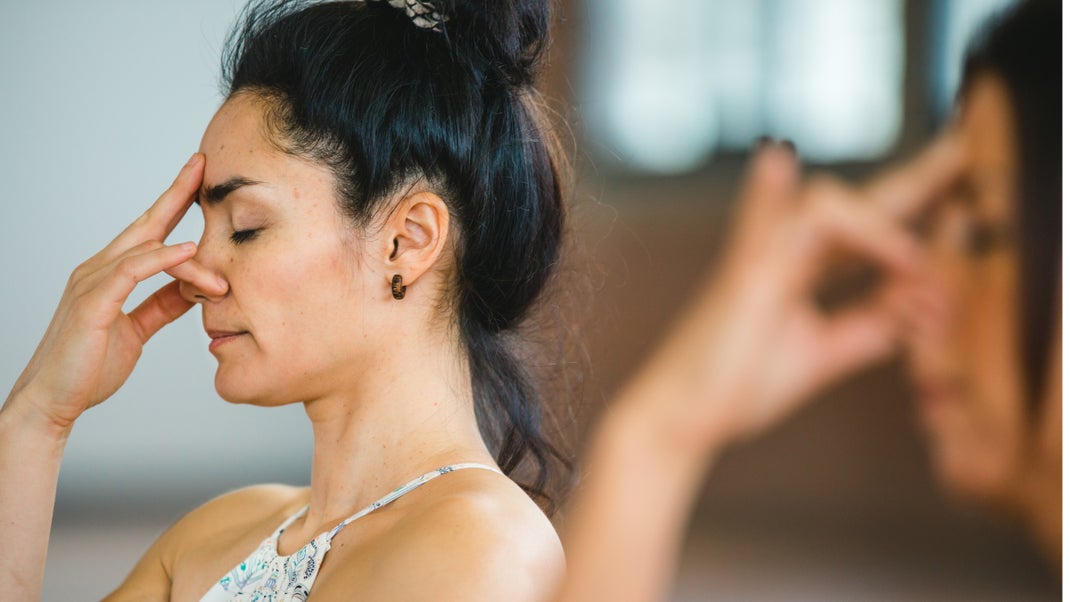Many people are interested in opening a Yoga studio. It can be challenging, but there are many experts that have the answers to your questions. Yoga is becoming more popular every day, and it looks like this trend will continue for years to come. This post includes 5 experts’ advice on how to open a Yoga Studio and succeed!
Brie Galicinao and Alysia Hendricks are on the cusp of opening a yoga studio in Santa Barbara, California, but setting up all the business details has been challenging.
“Just getting started was tough—finally visiting a bank with our financials, submitting a letter of intent on a lease, looking into copyrighting, and contacting contractors and equipment providers,” says Galicinao. “Even researching and looking at spaces for the studio took us a whole year.” (As of press time, they’re still in lease negotiations with a goal of opening by April 2018.) Galicinao and Hendricks are Yoga Medicine teachers trained by Tiffany Cruikshank, certified personal trainers through the National Academy of Sports Medicine, and softball coaches at the University of California–Santa Barbara. They’ve both wanted to open their own yoga studio for years, but the idea became more appealing after they each used yoga to recover from head injuries (softballs are not exactly soft).
Two years ago, Hendricks was pitching in a batting cage when a line drive ricocheted off the cage and smacked her on the forehead. She was diagnosed with a concussion and later post-concussion syndrome, suffering debilitating symptoms that persisted for months. “I had severe daily headaches, nausea, vertigo, and slow cognitive functioning,” Hendricks says, “I think the toughest part was having no guidance for how to get better and no timeline for my recovery. Doctors were limited with their resources, insurance companies wanted objective medical evidence or test results, and my friends didn’t realize how much I was suffering because they couldn’t visibly see anything wrong with me.” Hendricks, a dedicated yogi, started a post-injury routine with some breathing exercises and a couple of seated postures, slowly building back up to an hour-long practice. “Yoga was the only physical activity I could do for six months,” she says. “I was able to breathe into spaces where I was holding a lot of tension, slow my heart rate, and reduce the pain of my headaches,” she says. “Pranayama, in particular, gave me a starting point, or reset, and helped me be OK with the ups and downs of recovery as I tested my limits, including retraining my brain to process information and speak at the cadence I was capable of prior to the injury.”
Galicinao had a similar experience last spring after she suffered a concussion during softball practice. “Yoga was instrumental to my recovery,” she says. “It helped reduce my irritability, fatigue, and the sensitivity I experienced to light and sound—which was particularly difficult when coaching an outdoor sport.”
Hendricks and Galicinao are now determined to bring yoga to other athletes suffering from head injuries, as well as to anyone looking to improve their mental functioning and overall brain health. During their own recoveries, they realized that there aren’t a lot of resources that bridge the gap between the medical field (neurologists and others who treat brain injuries) and getting athletes back to being active, so they believe they will be poised to fill a real need. Armed with their decades of fitness knowledge, their deepening connections to the medical professionals who treat brain injuries in Santa Barbara, and Hendricks’s extensive business background (she’s worked in financial roles for Apple and the Tiger Woods Foundation), the pair plans to open MindShift Studio, which will offer a combo of yoga, cycling, and specialized strength and conditioning training. The yoga classes will be centered on ways to improve cognitive performance through balance poses and breathwork. And they plan to offer indoor cycling in their space since they consider it a safe way to get a cardio workout and bring blood to the brain without flaring up post-concussion symptoms—mainly because your head stays relatively still on a stationary bike as opposed to the up-and-down bouncing during running or the balancing act of cycling on the road.
While they’re confident in their purpose, Galicinao and Hendricks know that they have a lot to learn when it comes to succeeding with their studio. To help nudge them along, Yoga Journal set them up with some business-savvy yoga mentors who took a glance at their preliminary business plan and offered some guidance on the next steps. Read along for an inside look at what it takes to launch a studio, and for best practices when going into the business for yourself.
Step 1: Establish your business vision & strategy
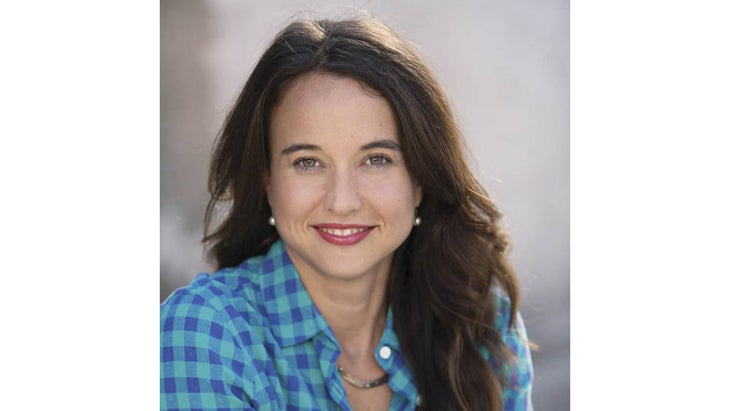
Mentor: Tiffany Cruikshank, founder of Yoga Medicine
Tiffany Cruikshank has been teaching a style of yoga focused on anatomy and biomechanics for more than two decades (called Yoga Medicine) and training teachers for the past 12 years. In that time, hundreds of her former students have started their own studios. In fact, a third of Yoga Medicine teachers own studios, so she’s watched the evolution of success stories as well as stumbles and falls. As Galicinao’s and Hendricks’s teacher, Cruikshank has been in the loop during their business incubation.
Cruikshank says she’s helped guide them with one of the biggest issues many new studio owners face, especially at the outset: establishing a well-defined purpose. The duo must be careful here, says Cruikshank, so that their focus on cognitive function and brain health doesn’t get lost amidst the cycling, in particular. “If they focus too much on the cardio, they may lose a lot of the yoga clientele, particularly since Santa Barbara has a lot of yoga studios,” she warns. Galicinao and Hendricks say that yoga will be the main offering, and their cycling classes will have a focus on mindfulness and brain health, featuring soft lighting and mellower music than you may experience at a standard cycling studio or gym. They plan to schedule 75-minute vinyasa yoga classes, 30-minute yin yoga and meditation classes, and 45-minute cycling classes that can be followed by meditation.
In a larger city like Santa Barbara, the pair can get away with having more of a niche studio (devoted to cognitive health and recovery), whereas in a small town where there are few options, studio owners should keep it broad, says Cruikshank. Galicinao and Hendricks know that the yoga offerings in their area are many—but based on their research, they believe that there’s still ample room for a studio that is uniquely focused on brain health, particularly as they connect with doctors, who can serve as a source of referrals. Cruikshank says that establishing relationships with medical pros will be key, and one of the simplest ways to start is to hand out postcards offering a free class to some nearby medical offices. “You want to get the doctors, nurses, and their staffs in the door to experience it themselves,” she says. She also recommends that they use their strengths as high-level coaches to connect to the athletic community at large in Santa Barbara, including reaching out to recreational athletes. “After all, they want to serve anyone who wants to feel better and perform better.”
Another key consideration that they will need to sort out, says Cruikshank, is how much control over the yoga classes they intend to wield. “Sometimes studio owners struggle between choosing a more corporate style—where classes and even sequences are all the same and are fairly prescribed by the studio—and classes that are more individual, but less predictable.”
When it comes to hiring teachers, Cruikshank recommends doing as much research as possible—especially outside of a traditional interview setting. “You want to find teachers whose yoga and wellness philosophy is in line with what you, as the owner, want for the studio. It can be difficult though—a demo class or two doesn’t always prove that. It may be helpful to look at potential teachers’ social media to see how they are connecting with people and if what’s important to them is in line with your values, too.” When you talk with prospective teachers, Cruikshank recommends asking whom they trained with and what trainings they have done, to get a sense of their qualifications. Then, ask prospective hires why they enjoy teaching, what kind of classes they like teaching, and what excites them—in yoga and in life, she notes. “With this info, you’ll get a sense of where a teacher’s heart really is, and that will tell you what kind of classes they will teach well.”
Step 2: Improve your leadership and organizational skills
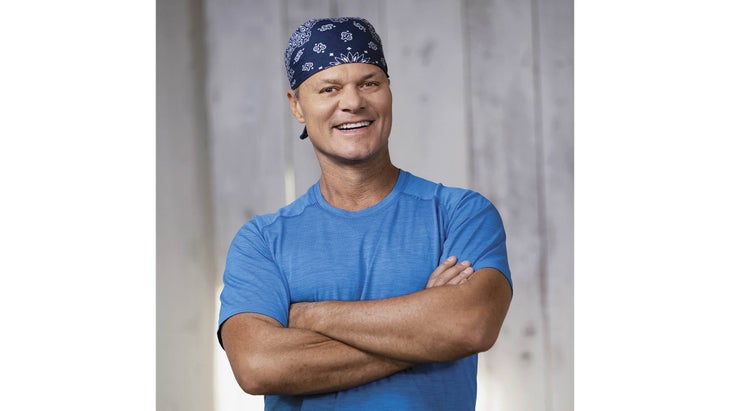
Mentor: Baron Baptiste, owner of the Baptiste Institute
Baron Baptiste has been in the yoga business since the day he was born. “My parents opened their first yoga school prior to my birth, in San Francisco, in 1952. I was lucky to have grown up in a yoga-school environment and had behind-the-scenes access to what it takes to operate a business based in yoga.”
In the mid-1990s, Baptiste opened his first studios—with the goal of carrying on his parents’ legacy, while also striving to make the practice more accessible to the masses—first outside Philadelphia and then several years later in Boston. Today there are more than 100 Baptiste Affiliate Studios and two Baptiste Yoga Schools—one in San Francisco and one in Boston—plus more than 600 Certified Baptiste Teachers.
And through it all, Baptiste has learned several key things about running a business—things that don’t just involve dollars, but definitely involve heart sense. “I am only as good as the people surrounding me. In the early days, I needed to learn to let go of handling every single thing,” says Baptiste. “You need to put people in leadership roles who embody the practice and are aligned with the larger vision. Doing so lets me keep my attention on what I love most: teaching.”
When it comes to motivating a studio team, Baptiste has always believed in “attraction over promotion.” He says Galicinao and Hendricks should think about what brought them to the practice in the very beginning and what keeps them coming back—then share these stories with their staff. “People can sense authenticity. Have a clearly articulated vision and communicate it to internal and external teams often,” he says. “As you become skilled at sharing it, you’ll become an extraordinary expression of your business.” Galicinao and Hendricks both say that they started practicing yoga in their college years as a way to complement and balance out the rigors of their intense athletic endeavors. “I was a stressed, young professional and needed the sanctuary of a yoga practice,” says Galicinao. Later, as she and Hendricks turned to yoga for cognitive improvements after concussions, the practice became an essential tool for recovery. “We want to help bring that healing journey to others,” Galicinao says.
When things get difficult in the business and success is on the line, it’s best to apply yoga practices and principles: “Stay, breath, adapt, and adjust as you go,” says Baptiste. “Every three months or so, get together with your team and review everything,” he says. “You will see pretty quickly what’s working and what’s not.” These regular check-ins helped smooth out communication problems within his team, he adds. “There are times that I dealt with teachers not showing up for their classes on time, or a studio manager not getting along with the teachers. I realized that I had to do a better job of getting everyone connected to the same vision. I had to come out of the pose, so to speak, and rebuild it.
Finally, consider your seva component—how your studio will give back and be a community leader—which Baptiste considers a key pillar for any business. “Seva practices, whether on or off the mat, leave everyone feeling elevated and deeply enriched,” he says.“ It helps everyone be a part of something higher, and bigger, than themselves.” Baptiste has found particular inspiration in making the practice available at minimal or no charge to at-risk youth, veterans, and communities in Kenya and other countries abroad as cofounder of Africa Yoga Project, but he has never limited it to only these groups. In line with brain health, Galicinao and Hendricks hope to raise money for dementia and Alzheimer’s causes, as well as find ways to offer low-cost yoga or meditation to patients.
Step 3: Develop a marketing and PR plan
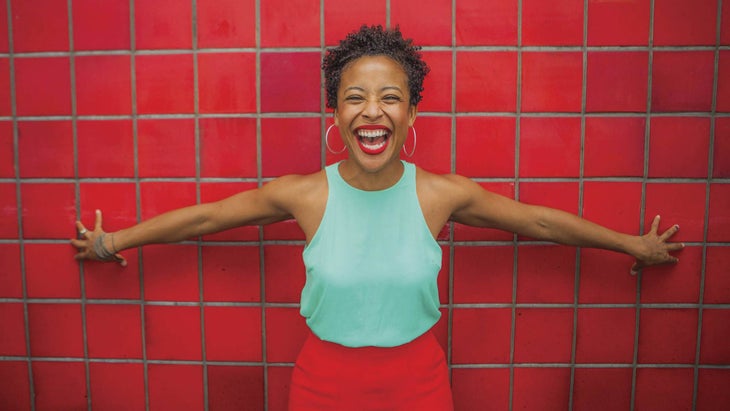
Mentor: Ava Taylor, founder, and CEO of YAMA Talent
Today’s world of yoga has seen the rise of yoga teachers who have tapped into their entrepreneurial instincts to create entire brands around their teaching styles and philosophies. And behind some of those big names is Ava Taylor, founder, and CEO of YAMA (Yoga Artist Management Agency) Talent, helping to guide the way. Over the past decade, this marketing and PR pro has helped studios, brands, and teachers like Chelsea Jackson Roberts, Sadie Nardini, Kristin McGee, Faith Hunter, Raghunath, and Leslie Kaminoff increase their relevance in the yoga space.
One thing she knows that yogis tend to struggle with is toggling between the heartfelt, gentle world of yoga and the colder, cut-and-dry business world. “Yogis often love their jobs too much, which causes them to sometimes make poor decisions, be overly lenient, take things personally, have poor boundaries, and not see things objectively,” says Taylor. Yogis can be experts at emotional decision-making, which can cause them to overreact and have difficulty looking at facts, she says. “This can make it hard to do what has to be done to make the business run well. A lot of new studio owners think that running a business is going to be easy, or that if you’re doing everything right, that everyone will like you. But owning a business, while fulfilling, is all-consuming and difficult.”
Thankfully, Hendricks has a strong business and financial background, but to be successful, she and Galicinao will also need to become comfortable with the reality that they’re also now salespeople and that they are selling a service that needs to be clearly packaged, marketed, and sold on a consistent basis. “They need to be vocal and actively participate in each level of their marketing. That means networking, meet and greets, giving out cards or flyers, running promotions, writing content for email marketing, giving incentives for referrals, and more,” Taylor says. And posting on social media will be crucial, but they shouldn’t rely too heavily on it. “It’s an inexpensive way to connect and share information with students, but it can be a huge time suck. They should plan ahead for social posts and choose key conversations to have online that reinforce their brand,” she says.
But before owners even get to all of those marketing to-dos, the crux of their marketing will depend on how simply and clearly they can again answer the question, “What does your studio stand for and what is its purpose?” says Taylor. “This is the roof of your building, so to speak.” In the case of MindShift Studio, they do seem quite clear on what the company is and what it plans to do, she notes. “However, people don’t buy what you do, they buy why you do it. I’d urge them to make potential customers really understand why MindShift Studio is vital, why brain health matters to athletes—both casual and competitive, injured and non-injured. You need to communicate that brain health is for everyone.” Since healthy athletes are a part of their business model, they have to clearly answer the “why” aspect in marketing efforts.
And marketing is not just getting press or making sure people know about classes, it’s about every person in the company—from the front desk to the teachers in each room—being able to articulate the studio’s mission. They are the ambassadors for the brand, and when they field a phone call or speak about the studio, they need to do so in the most convincing way.
And finally, Taylor recommends that all new studio owners be realistic and patient. It probably won’t all happen as fast as they’d like, and it may take a while to get a lot of people through the door—often up to two years, she says.
Crunch the numbers
Justyna Jaworska
To further help the mentees prepare for their yoga business, we turned to Brent Kessel, founder of Abacus Wealth Partners in Santa Monica, California, who frequently works with yogis and leads workshops on starting a studio. Here, he shares his best tips for creating a strong financial plan.
Decide whether to categorize staff as independent contractors or employees. Guidelines vary by state, but in California, the general guidance is that if you control the schedule and how your staff does the work, they are employees. The penalty for not withholding payroll taxes is generally 50 percent of the amount that should have been withheld, so always check with an employment attorney or CPA.
Register as a Limited Liability Company, which Galicinao and Hendricks have done with MindShift Studio, LLC. This shields you from personal liability if the business has legal trouble.
Make sure you have a solid business plan and strong competitor analysis with year-to-year financial projections for at least three years out.
Assume that revenue will take longer than you think, because all kinds of things can happen, from teachers wanting more money than you’d predicted to students not renewing their memberships. Make allowances in your projected budget for lower revenue and higher expenses than you expect.
It’s OK to take other people’s money. Asking for investments from others—be it a bank or people you know—requires you to answer the hard questions they will ask (“How will you get good teachers?”; “How will you compete in your town—which is a crowded market as is?”) in order to ensure that they will get a return on their investments. If you use your own money, it’s all too easy to skip some of these steps.
Pay yourself a market-rate salary. Founders often forgo this in order to save money, but you should always pay yourself what you would pay someone else to do what you do, especially since you may have to at some point (what if you get sick?). Plan for that salary in your projection.
The ins and outs of real estate
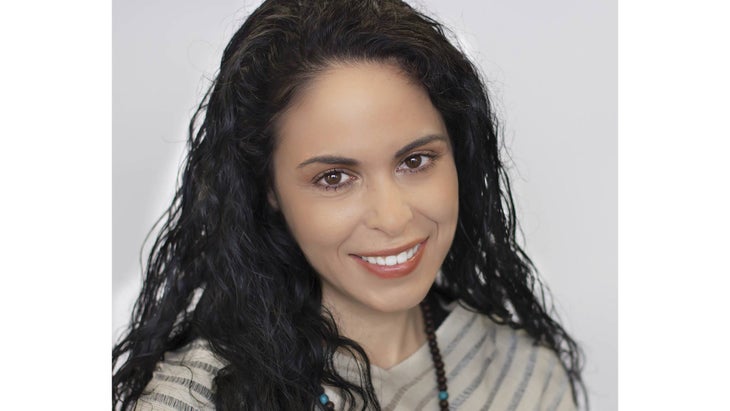
Your studio won’t be successful if it’s not in the right space, says Maria Turco, founder of Honor Yoga Studios in New Jersey. She handles the leases for all 11 of her studio locations and offers this checklist of must-dos (and don’ts) for selecting your building and analyzing your lease.
You need a lease that costs you no more than 20 percent of your revenue. In an expensive market like Santa Barbara, this can be difficult, but it should be accounted for in your business plan and in the amount you borrow from investors or take as a loan.
During negotiations, talk about a tenant improvement allowance, which means the landlord improves the space before you move in. At the very least, you should get what’s called a vanilla shell—empty space with working heat and air conditioning that only needs paint, floor furnishings, and fixtures.
Take your measuring tape (and maybe your yoga mat!) because when it comes to yoga studios, the magic width of the room is 20 feet. We want to get one person for every 30–35 square feet, so a smaller space of 600 square feet can accommodate about 15–20 people. If your business plan calls for that number of students per class, make sure you can accommodate!
Don’t underestimate the importance of parking. If there’s no adequate parking nearby, do what it takes to make it easier. Perhaps your landlord has a garage that you can negotiate a parking validation program with. Or get a parking lot lease from a neighboring business, such as a bank or a restaurant.
Be wary of giving a personal guarantee on the lease, which means you’re open to being sued for your home or investments if the business fails. Ask for no guarantee. If that fails, ask about offering a line of credit or putting up more money upfront—or even adding an “a good guy clause,” which essentially says that you’d vacate the space pronto in the event of the studio closing.
Ask for an assignability clause in your lease, which allows your lease terms to transfer to another owner in case you want to sell your business. This turns your lease into an asset instead of a liability because you’ll be able to sell it to a buyer who then will not have to renegotiate until the lease terms come due.
Your best bet is to sign a five-year lease with two or three 5- or 10-year options. If your business succeeds, you’ll want to be in that space for a while. But if you think that you may want to increase your space soon, try for a two-year lease with additional 5-year options.
Conclusion:
If your business succeeds, you’ll want to be in that space for a while. But if you think that you may want to increase your space soon, try for a two-year lease with additional five-year options.

